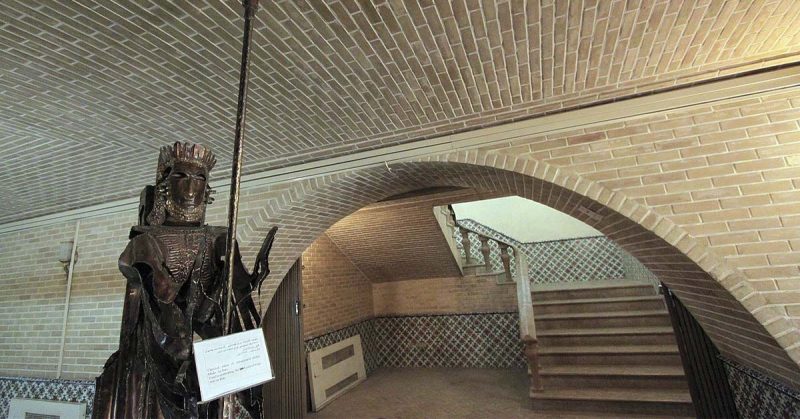In modern warfare, hand to hand combat is a last resort, with combat knives coming out either in stealth missions or in extremely close quarters combat. Before gunpowder, however, melee combat was the way of war. Over the millennia of warfare, people began developing ingenious weapons of war.
Melee weapons all operate on a few basic ideas; to pierce, to crush or to slash. With few exceptions, those were the goals but the ways they were achieved varied greatly by time period, culture and adaption to the battlefields of the day. Here are some of the most effective weapons used in ancient battles. This is far from a complete list so feel free to comment with what you think were the most devastatingly effective weapons.
Mesoamerican Macuahuitl
The little known Macuahuitl was an extremely unique weapon used by the Mesoamerican’s such as the Aztec and the Maya. The Macuahuitl was fashioned almost like a wooden practice sword but with notched grooves on the side. In these grooves were a varied amount of obsidian blades often a few dozen.
These blades stuck out from the grooves about an inch. With the hilt being designed for one or two-handed operation, the Macuahuitl was essentially a club that caused multiple lacerations on impact. As the Mesoamericans were not privy to the advanced metalworking of the Europeans, they adapted.
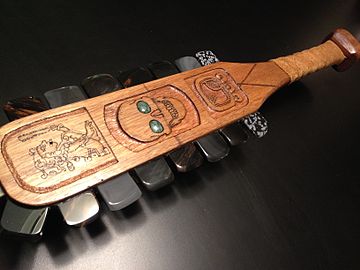
Obsidian can carry an edge rivaling even modern razor blades and well-made Macuahuitl did not lose their stones even with heavy use. Unfortunately for the natives it was less effective against the armored Europeans, however there were recorded instances of a Macuahuitl warrior decapitating an enemy horse with as little as one or two blows.
Sarissa
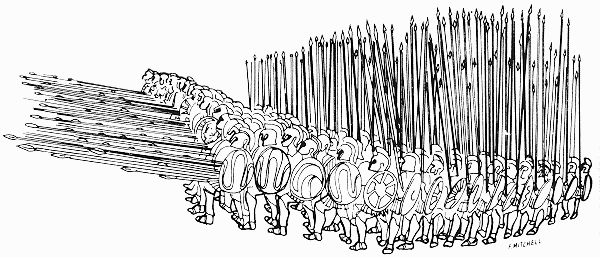
The Sarissa was the weapon that allowed Alexander to conquer Persia. His father, Philip II of Macedon developed a professional army almost from the ground up and in the process invented the Sarissa. A very long (13-24 ft.) spear, the Sarissa was heavy and unwieldy; but when used as part of a dense phalanx formation, it became a wall of spear points. The first 4-6 rows stood with their Sarissas out and the remainder held their points angled upright as a shield against missiles.
The main point was a palm-wide leaf point while a heavy but spike provided some balance. The but spike also allowed the front lines to anchor their Sarissa to ward off heavier charges as well as functioning as a backup point. Lastly, the but spike allowed for an easy downward thrusting coup de grace on wounded enemies as the phalanx pushed forward. While the Sarissa armed phalanxes were excellent for holding ground, a well-trained phalanx could churn forward through the enemy, trusting multiple points at single opponents.
Gladius
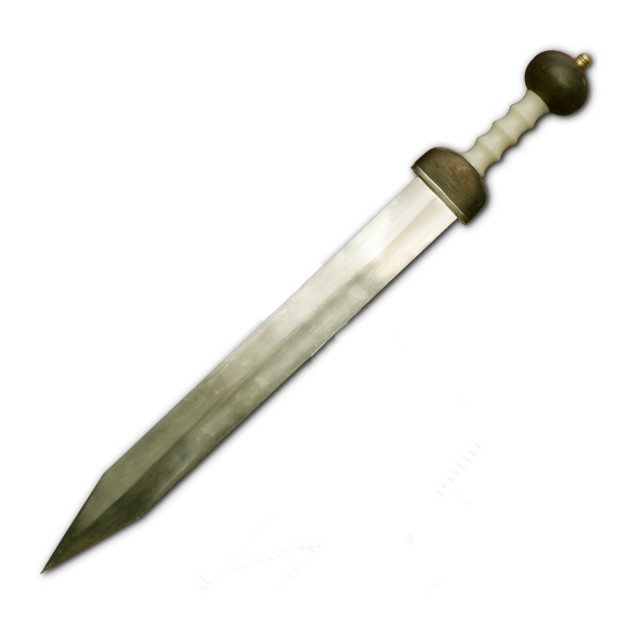
Few ancient weapons are as iconic as the Gladius, it is a symbol of the imperial power of the Roman legions and their systematic conquest of the Mediterranean word. The Gladius was refined over a couple of centuries stretching back to the days of the Republic. It is possibly derived from the slightly curved Falcata of the Iberian tribes that was equally effective at stabbing and slashing. A medium length straight sword, the Gladius was deceptively simple.
Its sharp point was intended for rapid stabbing thrusts to the gut. It had enough length to reach over an opponent’s shield to their face as well. Legionaries were taught to bash with their shield to unbalance the enemy, then to raise their shield and deliver a short quick thrust. Their target was not always the man in front of them, they often targeted the unshielded right side of the man on their opponent’s left. The Gladius was an understated weapon that caused large piercing wounds and if necessary, could easily be used with a slashing or hacking attack.
Falx
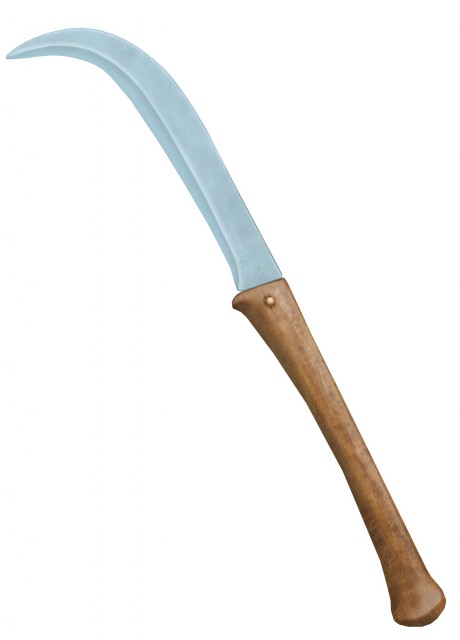
As the Roman conquest brought Roman territory to its height with Trajan’s push into Dacia there was one weapon in particular that gave the disciplined legions nightmares like no other. The Falx was a weapon native to Thrace and Dacia, modern day Bulgaria and Romania.
A long handled blade, the Falx curves sharply forward around ¾ of the way down and comes to a sharp point, almost forming a bladed right angle. It was wielded with a strong swing to penetrate with the point (it was known to go through Lorica Segmentata) but it was equally effective at cleaving of hands or heads. During Trajan’s invasion of Dacia many soldiers reinforced their armor with thick strips of iron specifically to defend against this weapon.
Tachi (Katana)
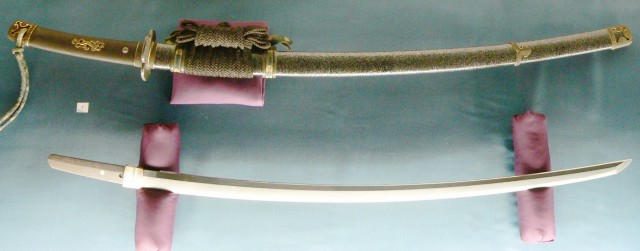
The Tachi, which evolved into the more familiar Katana, when worn with the accompanying shorter sword or dagger, established a man as a samurai. Tachi were carefully crafted swords, averaging about 35-45 inches with a long curved blade coming to an angled point. Unlike the other weapons on this list, the primary technique was to slash with the Tachi. Very light and sharp, fights with Tachi’s flowed like water with opponents aiming to slash through a seam in the armor.
The Tachi was traditionally worn blade down, hanging from a belt. As samurai began wearing their Tachi blade up, with scabbard firmly secured in the belt, they were able to draw and strike an enemy with one fast and fluid motion. At this point the Tachi began to be called the Katana. Even with the introduction of gunpowder the Katana was a symbol of Japanese might; they were even distributed to soldiers in WWII.
By William McLaughlin for War History Online
